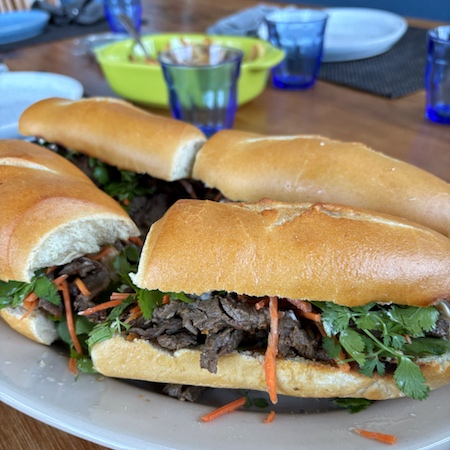For years I have been a fan of wood cutting boards. I love the way they feel, all sturdy and secure on the counter when I’m chopping. I love the way they perform. I love the way they look. But, every time I use them to prep some meat, I wonder if I should have pulled out my polypropylene or tempered glass cutting boards to ensure a more sanitary food prep environment.
Well, Taylor Guess of Proteak, a manufacturer of teak products made with renewably-harvested lumber, enlightened me to the fact that I just may be misinformed.
Wood cutting boards may provide beauty and durability throughout the years, but they have taken a back seat to polypropylene boards (especially those infused with Microbanan antibacterial) when it comes to offering consumers a more sanitary environment to cook. But, as Guess points out, research indicates that wood cutting boards may also be just as, or even more, hygienic option than plastic.
“In the past, there has been misinformation about wood cutting boards, and a lot of it has to do with the impression that plastic is a better option than wood,” he says, pointing to a study in which Scientists at the Food Research Institute, Department of Food Microbiology and Toxicology, University of Wisconsin at Madison, conducted.
They set out to try to find a way to make wooden cutting boards just as sanitary as plastic cutting boards “seem” to be.
I went in search of that widely cited report and here is what I found:
“Research suggests that the naturally absorbent quality of wood is a key factor in the inability of bacteria to survive on it. They found, just three minutes after initial contamination, at room temperature, all the bacteria on the plastic boards were still alive and active. In that same brief time, more than 99.9% of the bacteria on the wooden boards had died. Twelve hours later, still at room temperature, the bacteria count on the plastic boards had increased. After the same twelve hours, no bacteria at all could be found on the wooden boards.
The researchers theorized that the pores in wood might trap and immobilize bacteria, and then the microorganisms would die rapidly as the wood dries.
According to this theory, used wooden cutting boards outperform new ones perhaps because the numerous cuts on their surfaces would increase their natural ability to absorb juices, and thereby to speed evaporation.
Although all plastic materials naturally repel liquids, the cuts on the surfaces of ‘used’ plastic cutting boards tend to trap liquids, and thereby to slow down their evaporation. This seems to be why plastic cutting boards, especially used ones, provide an ideal environment for bacteria to multiply.
Indeed, the researchers found that it is very difficult to sterilize the cut surfaces of used plastic cutting boards. A strong penetrating bleach solution is necessary, or a full cycle in a commercial dishwasher, for complete sterilization of a plastic board. Hand washing in hot soapy water is not enough to sterilize a used plastic board, but it is more than enough for a wooden board.”
This research may not give a clear-cut answer to the question (pun intended;-), but at least is makes me feel a bit better about my use of wood cutting boards. Although, I think that I’ll still keep my plastic ones around.


